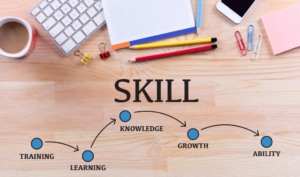
The Great Work Reset Continues. Can Learning Seal the Deal?
Diving into important talent strategy trends for 2024, one theme surfaces again and again. What many call “The Great Work Reset” isn’t over. Far from

Diving into important talent strategy trends for 2024, one theme surfaces again and again. What many call “The Great Work Reset” isn’t over. Far from

Recently, one of the soldiers in my reserve unit decided it was time to hang up the uniform and transition to the civilian world. During

With so many interesting new HR tools available lately, are you wondering if more modern HR analytics could improve your workforce planning capabilities? In a

Leaders, do workforce engagement issues keep you up at night? If not, here’s a powerful wake-up call from Gallup. Last year, the global employee engagement

When it comes to implementing a successful engagement strategy, HR teams can’t afford to ignore employee expectations. Yet, research suggests that too many organizations forget

Numerous jobs can be performed remotely or on a hybrid schedule. Still, more than 70% of full-time roles require people to work onsite. For instance,

The working world has spoken: Employees want to be part of organizations that value and support diversity, equity and inclusion (DEI). But they won’t accept

Sponsored by: ADP Employers are looking for new ways to stand out in terms of employee perks and benefits. One solution: earned wage access (EWA).

Investment in learning and talent development is an essential ingredient of every company’s engagement and retention plans. What is one crucial topic to include in

Sponsored by: Cornerstone Learning is the most important thing we do at work. I know that’s a bold statement. I’m sure you’re already trying to

The Great Resignation was a very real and present concern for HR professionals in 2021. In December alone, 4.3 million workers left their jobs. As the

Is your organization feeling the effects of the ‘great resignation?’ If not, you are one of the lucky few. Official figures from the U.S. Bureau

Millions of Americans have left the workforce due to the ongoing public health crisis of the COVID-19 pandemic. This situation has particularly impacted female employees

One year after the onset of the global pandemic, there is light at the end of the tunnel. Economies are opening back up, the vaccine

According to CNBC Make It, “Millennials and Gen Z currently account for slightly over a third of the workforce.” In the next decade, they expect

Hiring is so very different today. The technology we so depend on is also our biggest challenge. To solve that challenge, we can’t hide behind

In an outlook where the future looks bleak, only true leaders guide their team through the storm and come out stronger on the other side.

Many companies and job titles will go through drastic changes due to the ongoing COVID-19 pandemic. The HR sector and the people working in it

In some countries, as lockdown measures continue to ease, businesses are opening and employees are heading back to work. But some of us are still

Video is more important than ever for the vast majority of businesses trying to stay open during the pandemic, which you can see just by

Nobody needs to tell you that we’re in hard times. A pandemic is sweeping the nation, a trail of personal and economic devastation behind it,

Listen to the full conversation and see our questions for the upcoming #WorkTrends Twitter Chat. And don’t forget to subscribe to the podcast, so you

In the past several months, many companies have modified their performance programs. From streamlining their review processes to running more frequent pulse surveys, organizations around

A large component of any work culture is how managers assess and review employee performance and chart progress. Given the remote and hybrid nature of

What do Apple, Disney, Verizon, Google, and Starbucks have in common? They’re all multi-billion dollar companies, and they all offer tuition reimbursement to their employees.